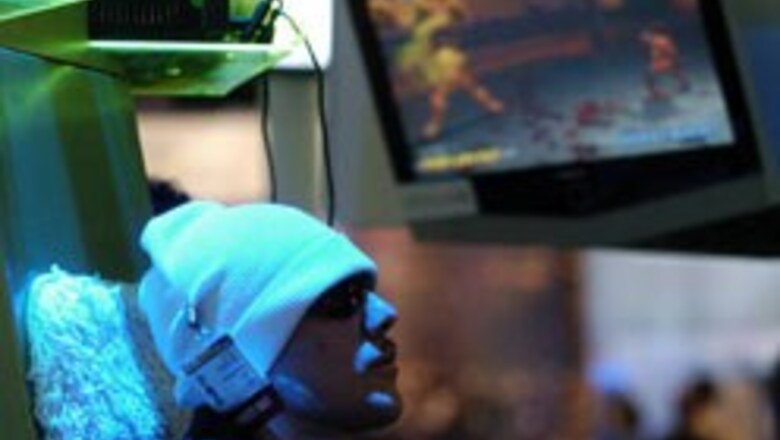
views
Los Angeles: As the influence of video games on mainstream culture grows, art critics and designers are calling for the genre's graphics to move beyond "realism" at the same time that game makers want to see how far they can go to make their characters more life-like.
"It's time to break the rules again," said curator of painting and drawings at the Los Angeles County Museum of Art and lead juror for the Electronic Entertainment Expo's Into the Pixel, Kevin Salatino.
The exhibition is now in its third year.
Video game artists have put their stamp on everything from films and advertisements to toys and emerging art forms.
They have backgrounds in fine art, film, design and other areas and sometimes chafe under the dictates of technology, prevailing taste and economic reality.
The current mandate is to turn out "hyper-realistic" graphics that are a key selling point for Microsoft Corporation's new Xbox 360 and Sony's PlayStation 3 console.
At the same time, they are charged with making games that appeal to a broad enough audience to justify development costs that can top $20 million.
While game-playing gadgets are providing ever-niftier tools for making virtual characters that look and act real, artists are far from having total freedom when it comes to pushing the limits of that technology.
Some technological advances make deficits more glaring.
For example, designers cannot mimic the light in the eyes of living things.
Put "dead" eyes on a character that is otherwise super-realistic and the result is called the "zombie effect."
"We have an industry that has yet to reach its realism pinnacle," said Into the Pixel juror president and creative director at game developer Oddworld Inhabitants, Lorne Lanning.
The 16 works selected for this year's exhibition pointed to the future of gaming because they pushed the limits of technology or told a story with subtler, more complex imagery.
Titan's Head by Eduardo Gonzalez won a spot among the finalists for its humor, scale and sophistication.
It was the artist's ticket to a job in a games unit at Sony, but the art never appeared in the God of War title for which it was created because the gameplay it needed could not be delivered with existing technology.
"It pushes us forward. This is where we're heading, hopefully," said juror Tim Langdell, a professor at the University of Southern California and founder and chairman of EDGE Games.
In the Garden of Eva by Japan's Yuji Shinkawa recalled Japanese wood-block prints and ink drawings in a piece inspired by Konami's Metal Gear Solid 3: Subsistence game.
Eyes by French artists Gerald Obringer and Pierre Guillaume Baret drew from Surrealist art to tell the story of Lexis Numerique's Evidence: The Last Ritual.
Tyler West's Rooftop from Electronic Arts Inc.
The Godfather game appears to be a run-of-the-mill aerial view of a building, until a closer look reveals a man looking from a rooftop to a man dead on the street below.
"Subtlety is very seldom seen in our industry," said Lanning.













Comments
0 comment